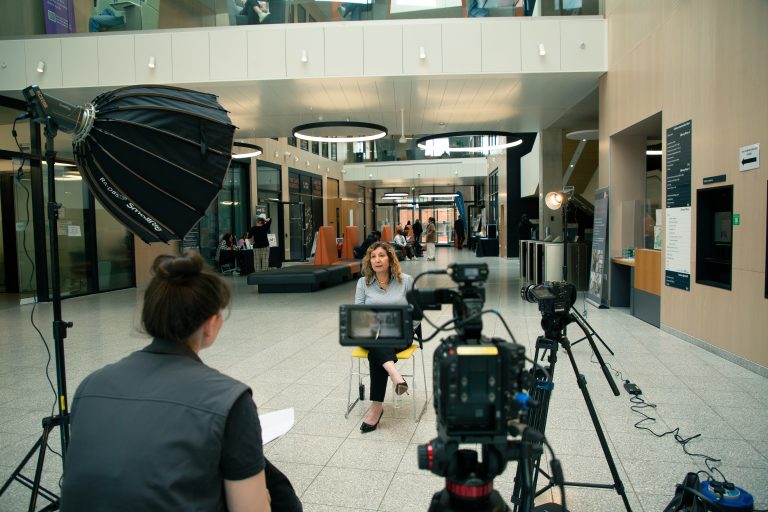A huge proportion of the information we absorb is taken in visually. In fact, over 90% of information transmitted to the brain is visual, according to data published by the Visual Teaching Alliance*. And, with the fact that 65% of us are visual learners** it’s unsurprising that more and more businesses are turning to animated videos to get their message across.
When you hear the term ‘animated video’ you probably have a vision of a cartoon character telling an entertaining story, but that’s just one style of animated video.
In this blog we’ll introduce you to six different styles. The fact that animated videos are so flexible is great news, because it means you can choose the style that best suits the type of information you wish to impart to your target audience.
6 styles of animated video
1. Character animations
Let’s start with the one that you may be most familiar with, the character animation. This style of animated video is perfect for making an emotional connection with the viewer and building empathy.
Character animation resolves the problem of hiring an actor or roping in a member of staff to explain how your customers interact with your product or service. If you create an animated character, ‘they’ tell the story on your behalf.
Your story can grow into a suite. If there are a number of pain points that your product or service resolves, you can create a series of animated videos explaining all the different situations, problems and solutions. You end up with a library of videos perfectly targeted for each scenario.
2. Iconography
If you have an abstract idea to explain or wish to communicate the benefits of your product or service, Iconography can be a good style to use.
Icons are part of our daily life; think of road signs and navigating functions on a computer. Because icons are familiar and well recognised, they are great for providing information quickly, cutting through the ‘clutter’.
We used the iconography style for Memset to explain their range of services and the features and benefits.
3. Process animation
Trying to explain a process or a series of events can become very confusing. Using the process animation style solves this problem. The animated visual clearly walks the viewer through a journey from start to finish.
You can imagine how this would work really well for an accident repair centre. The animated video would start with the car being put onto a recovery vehicle, then all the paperwork being taken care of, through to the happy customer collecting their shiny, repaired car. Not so easy to arrange in a live video format; expensive too.
The process animation style works especially well for software companies. We created this process animation video for Portaltech Reply. It explains their agile delivery model for moving to a new ecommerce system. Far more interesting and entertaining than reading through a long document of steps.
4. Statistical animation
Communicating statistical or figure-based information can bamboozle the audience. You’re in danger of rapidly losing their attention and if they do stay with you to the end, they’ll probably feel as though their brain’s been fried!
Pie charts, bar charts, line charts have long been used in reports to visually express numerical information. The video equivalent to make sense of the numbers is to use the statistical animation style. Numbers and statistics are displayed in eye-catching and interesting ways that bring meaning to the data. Add a voiceover explanation and the statistical animation style is an impactful way to deliver your message.
The Technical Training Foundation needed to explain some huge numbers and interesting stats. This next video is how we helped them to get this information across.
5. Material Design
Material Design may be a new concept for you. It is a design language that was developed by Google in 2012.
Using Google’s style, you can deliver a series of messages bringing together several styles. Material Design includes a full icon library and colour palette which is consistent and universally recognised, which makes the creation of animated videos really visually cohesive.
The result is a really modern and contemporary style of animated video. Its striking colours and absence in some cases of a voiceover, means this style works brilliantly for exhibitions.
Here’s a video we created using Material Design.
6. Kinetic typography
Kinetic typography style is where the words of a script are on screen all the way through the video. This is also a great style for exhibitions where you might be restricted on using sound.
The addition of the words on screen really helps to galvanise the message, but the rule still applies that videos are there to be watched not read, so they shouldn’t be too long and should be integrated with graphics that bring the words to life.
This video we created for Element Twenty has a clever use of words that support the voiceover explanation, along with some interesting iconography to bring it all together.
Animated videos are flexible
If you thought that video wasn’t an option for you, because your offering was too complex to explain, hopefully we’ve demonstrated how flexible animated videos are and how they can solve many communication challenges.
We love to solve a communication challenge! The harder the better! So, do get in touch and we’ll do our best to come up with some innovative ideas and solutions.
Sources:
* Visual Teaching Alliance
** Forbes – Why infographics rule


